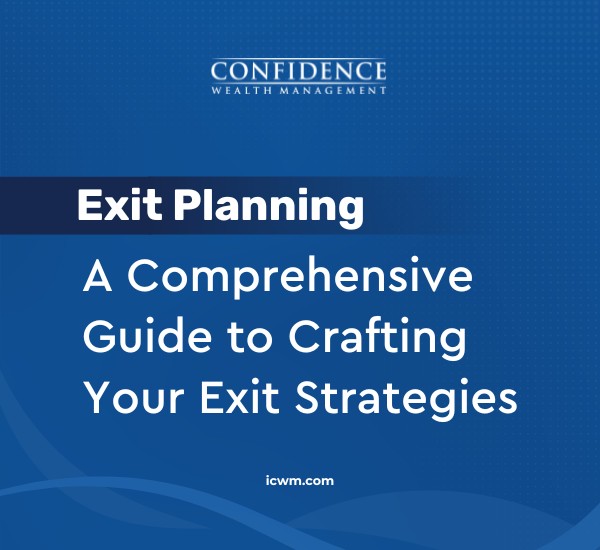A brand is what a company’s known for — may it be their tagline, logo, statement, or image that relates to them.
It is something that immediately communicates with your customers, and for many entrepreneurs, branding helps define the company’s mission and values. However, is branding just for businesses?
Let’s stop for a moment and think about the last time we’ve thought about our family’s culture and values. What do we stand for as one? Isn’t it surprising that we may not have thought about it until now? Like us, there are many people who find it easier to recognize values that relate to their career, rather than their families.
Similar to businesses, we can also incorporate branding and take it as opportunities to recognize our family’s values and culture. Not only will it help us improve our relationships with our family — it will also lead us to a more meaningful and prosperous life.
Why a Family Brand?
Defining businesses’ brands and their stories led Chris Smith, founder of The Campfire Effect, to do the same with families. In his latest venture called “The Family Brand”, he takes lessons in corporate branding and incorporates them into families.
According to him, the best way to create better leaders, have healthier connections, and a greater society overall starts with the most crucial part, which is family and how strong our intention is with regard to our culture and values.
The main concept is that, if we haven’t defined yet who we are and who we want to be, the world will do it for us. Nowadays, social media and news are great factors that influence us, and these things build up over time. They grow into us, and we can’t help but be influenced by them in some ways. They tend to pressure us on what to buy, how to act, and what to do in certain situations.
The only way we can remove the pressure from our lives is if we block it all out and focus on what we really care about as a family. However, this is not as easy as it sounds.
Many families are so focused on other things that they are not able to take notice of what’s in front of them. If we compare life at home where we do not get recognition for our hard work, it makes it easier for us to work on things that will give us quick results instead — like work, where we are praised instantly by others after a job well done.
That does not mean that we stop building our brand. In many cases, families who have recognized their cultures and values have forged a stronger connection with their other family members. They are happier and they enjoy each other’s company more compared to when they hadn’t discovered their branding yet. Many families also find that their problems involving depression, divorce, and abuse lessen when they are on the same page with their values and goals.
When it comes to financial securities and net worth, families who have built their family branding have more chances to preserve their wealth compared to those who haven’t. There’s a finding that 70% of families lose their wealth by their second generation, while 90% lose theirs by the third generation.
Having a family brand creates a unity of shared trust and values that involve children and even grandchildren. Taking the time to talk to and teach them about financial matters lays the groundwork for smarter spending and a more disciplined outlook on life and money. Because they are taught certain values, they will tend to spend their inheritance in a more meaningful way — not just for them, but also to help their community.
The Three Pillars of a Family Brand
There are three pillars of the family brand. Let’s discuss each one by one.
1. Culture
How do we approach our family? Do we do it with complaints or possibilities? Culture is how we connect with our family. It is the mindset that we bring into family situations, both good and bad. Our job is to define and reassess culture if we want to change it for the better of our family.
The culture that exists now — or the one we want to create — opens doors of possibilities for us. The key in finding our family’s culture is by discussing it together, getting ideas on which one fits all the members, and then discussing how and what it means for everyone.
Important: Leadership and ownership is the most important key in the family culture. Regardless of what it is, we must act on it and demonstrate it through our actions, not just on paper.
2. Language
Language plays a huge part in the family culture. It is how we will declare values and take a stand in what we believe in. It also creates the environment in which we live. If we say “can’t” and “what we should do is…” all the time, we could change it to “can” and “we can do this”.
Here are the three key written documents similar to the aspect of key branding:
- A mission statement detailing what we stand for.
- A vision statement of what we want to be known for.
- A values statement detailing what we should live by.
Here are some tips:
- Start the mission statement with “We believe…” instead of “Our mission is…”
- Start the vision statement with “We are committed to…” instead of “Our vision is…”
- Attach your last name to the values. Say “Johnsons believe…” and it will have more power compared to “Our values are…”
3. Experiences
We cannot control the experiences that come our way, but we can create them. Creating experiences with the family can be done using the following:
A connection blueprint is where to detail times when our family is the happiest or the activities we were doing that make us all feel connected. When we feel disconnected, we can always look at this to find our way back and connect again.
A traditions audit is the assessment of whether certain traditions should be taken off the activities and which ones will serve the family well. The traditions that make the family connect more as a unit are much more valuable than the big ones that mean nothing.
Final Thoughts:
Family branding helps improve a family’s physical, emotional, and financial health. Other forces and influences may shape our family if we don’t do it now — so we must block them all out, plant our flag, and build our brand!










